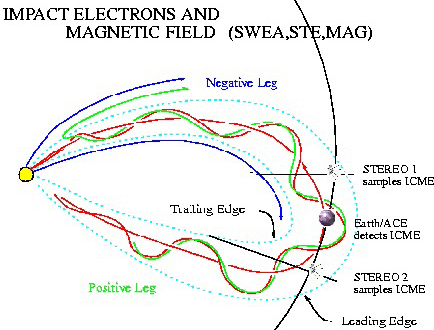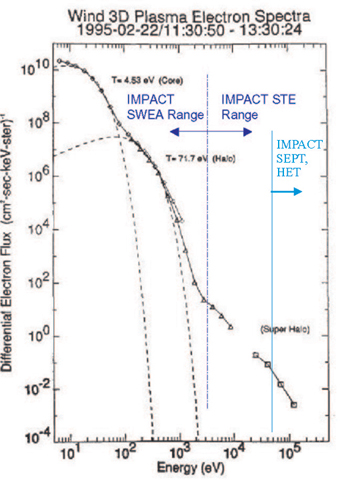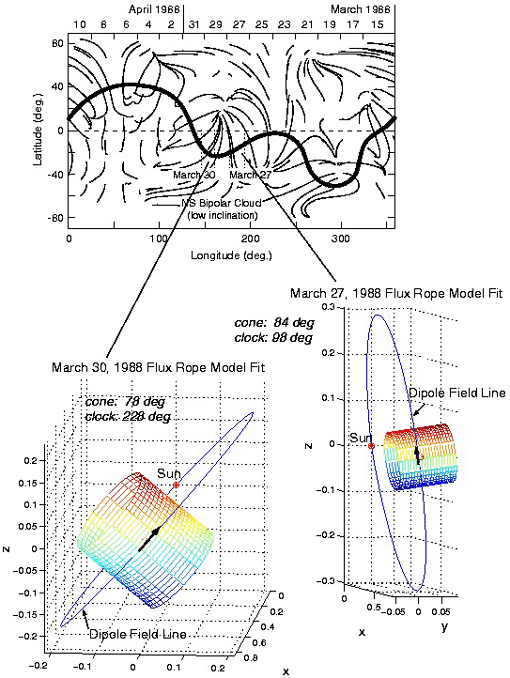 |
 |
|
|
|
|
|
|
|
|

The boom suite consists of three separate instruments that cover the magnetic field, solar wind electron, and suprathermal electron analyses needed to meet the STEREO science goals. The boom suite includes:
- Solar Wind Electron Analyzer (SWEA)
- Suprathermal Electron Telescope (STE)
- Magnetometer (MAG).
Click on the active areas on the image below for instrument descriptions for the IMPACT boom suite.

Boom Suite Science Goals

- Compare ICME magnetic field and electrons at both locations to deduce global structure and solar connections of the field
- Compare deduced ICME structures with CME structures observed by SECCHI
- Compare inferred large-scale interplanetary shock structures with those deduced from remote sensing and in situ shock detection by IMPACT-SEP and SWAVES
- Compare results of global MHD models of the coupled corona and solar wind with the magnetic field and inferred global ICME structures to close the loop with images
STEREO/IMPACT Electron Measurments

The IMPACT coverage of the electron spectrum in the solar wind is illustrated in the example from the WIND spacecraft. Both solar wind plasma electrons and suprathermal heat flux electrons are detected by SWEA, while STE detects low energy solar flare electrons
STEREO/IMPACT Flux Rope Modeling

The cylinders show inferred ICME flux ropes. They appear to map back to the central disk orientation of the coronal helmet streamer belt on the day they occurred as seen in the field line projections from a potential field line model at the top of the figure. (Figure adapted from an original by Tamitha Mulligan, UCLA).
MAG and SWEA

The magnetometer (MAG) and solar wind electron analyzer (SWEA) on IMPACT are akin to instruments on the WIND spacecraft. The plots to the left show an event investigated by the WIND project in October 1995.
The top three panels show the magnetic fields and solar wind velocity measured during a magnetic cloud passage over the WIND spacecraft. The bottom panels show the pitch angle distributions of surprathermal electrons. Counterstreaming electrons (distributions peaked at both 0 and 180 degrees) suggest the field in the magnetic cloud is connected to the sun at both ends. (Figure courtesy of Davin Larson, UC Berkeley)
SWEA | STE | MAG | SEPT | SIT | LET | HET
Boom Suite | SEP Package
